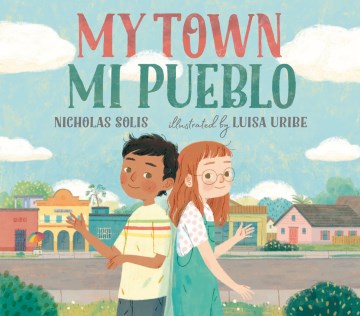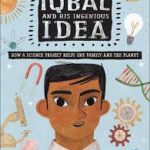written by Nicholas Solis; Illustrated by Luisa Uribe

Two cousins live on either side of the Mexico-U.S border and share what they love about their homes as well as their enjoyment of their cousin’s town. Each two page spread shares a unique aspect of their towns in both English and Spanish. They share about their houses, schools, markets, holidays and time together in both towns. This sweet story ends with the cousins and their families crossing the border, a bridge over a river, with guards on both sides and both kids expressing the wish that visits could be easier. They stand overlooking the river and share that both towns feel like home.
This story is great on many levels. The lovely illustrations, which offer details of life on both sides of the border, are perfect for some compare and contrast discussions. The English and Spanish is simple enough for language learners and read alouds. And, students will notice the joy that these two cousins experience no matter what town they are in together.


